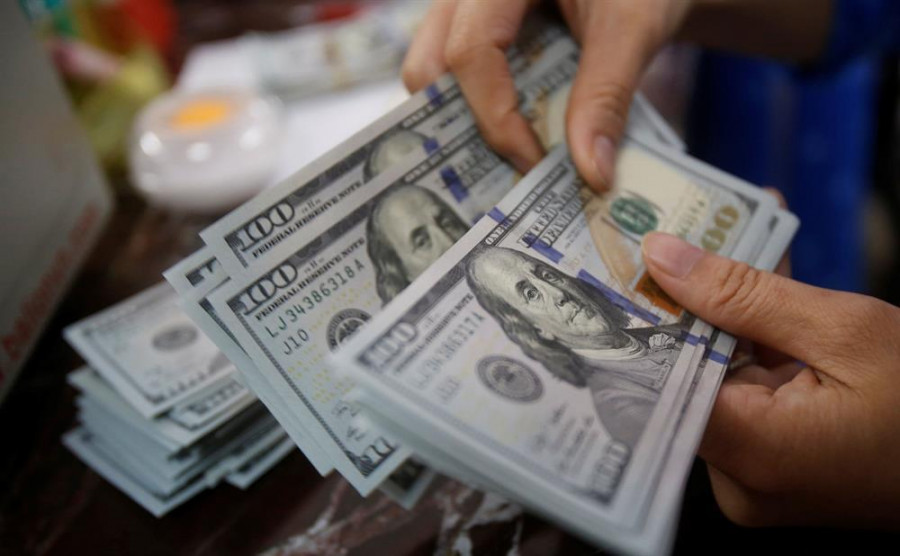Given the geopolitical developments, the digital assets sphere is becoming more and more attractive. For some, this is a circumvention of sanctions, for others it is a way to save their savings, and a simple belief in future serious changes in the world of finance in the context of its decentralization and freedom. What will happen to the dollar then?
Zoltan Pozsar, a former Federal Reserve and Treasury official and now Credit Suisse short-term rate strategist, recently said that the US is currently in a crisis that is leading to a new monetary order that will eventually weaken the dollar and lead to higher inflation in the west. "This crisis is not like anything we have seen since President [Richard] Nixon took the U.S. dollar off gold in 1971," Pozar wrote.
The Bretton Woods Agreement, which was negotiated among 44 countries, offered gold as collateral for the U.S. dollar, to which other currencies were then pegged. This structure began to unravel in the 1960s when the U.S. trade deficit became too large to be ignored, and completely collapsed in 1971.

Now, the dollar is backed only by securities that the U.S. government does not have time to print and issue. Pozsar notes that this scheme ceases to work normally, thereby announcing the beginning of the end of the current currency regime. Another reason for the collapse of the current monetary system is the freezing of Russia's gold and foreign exchange reserves by the G7 countries after the start of a military operation on the territory of Ukraine. What used to be considered risk-free is no longer so. Almost non-existent credit risk was instantly replaced by a very real risk of asset confiscation - just like the refusal of the Russian Federation to pay its debt obligations, which may lead to another default, we will find out in mid-April.
Pozsar also notes that what happened, of course, did not go unnoticed by China. Currently, the People's Bank of China is faced with two alternatives to protect its interests: either sell treasury bonds to buy Russian commodities, or carry out its own quantitative easing, that is, print enough yuan so that you can easily buy as many raw materials as you need. Pozsar expects both scenarios to mean higher inflation in the west, which is already making many dizzy.
The risk of rising inflation also affects the U.S. dollar, which is increasingly in demand recently. Expectations of a more aggressive policy of the Federal Reserve may lead to further strengthening of the dollar against risky assets.
One of the basic scenarios was recently shared by ABN Amro Bank NV. According to economists, in the near future, the euro will fall to parity or even lower against the U.S. dollar. The fall in European currencies, including the euro, the Swedish krona, and the Polish zloty, will continue, according to Georgette Boele, a senior currency strategist at the Dutch lender. Physical supply disruptions to key commodities will get worse over the coming months, disproportionately hitting the euro area economy and delaying European Central Bank tightening, she said.
"We expect more negative investor sentiment going forward," she said in a note. "When there is market panic, only safe haven currencies will rise."
Boele believes that the Japanese yen and the U.S. dollar will rise better, and the Swiss franc will grow worse. In a more negative scenario, the euro/dollar exchange rate could approach a historic low below 0.83, she said.
As for the technical picture of the EURUSD pair
The euro reacted with a slight increase to the U.S. inflation data, but then the pressure on the pair returned. Although buyers continue to count on the breakdown of the 11th figure, which will maintain demand for the trading instrument, however, geopolitical tensions around Russia and Ukraine will limit the upward potential of the pair. To begin with, bulls need to consolidate above 1.1020, which will allow the correction to continue to the highs: 1.1110 and 1.1180. The decline of the trading instrument will be met with active purchases only around 1.0950. However, the key support level remains at the area of 1.0880.
As for the technical picture of the GBPUSD pair
The buyers of the pound did not show themselves, and are now focused on the resistance of 1.3140. The return to control of this range will allow us to count on a more powerful correction of the pair in the area of 1.3190 and 1.3240. However, the prospects for growth are overshadowed by Russia's military special operation on the territory of Ukraine. If we go below 1.3085, then the pressure on the trading instrument will increase. In this case, we can expect updates of new annual lows: 1.3030 and 1.2920.










